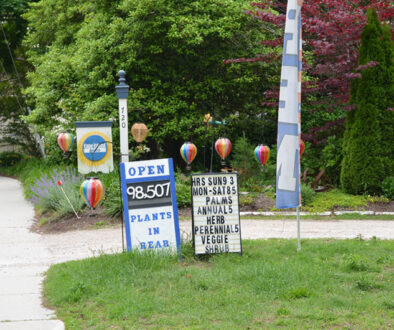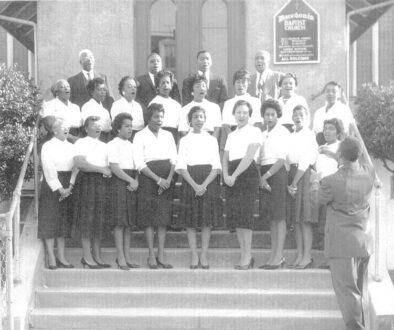Edelman Fossil Park & Museum

In 2015, after a 65-acre quarry closed in Gloucester County, developers wanted to turn it into a Costco.
Luckily, scientists had first dibs on these digs.
For almost a century, the quarry’s sandy soil had been mined for fertilizer. But beneath it all was a seven-inch sedimentary layer from one of history’s most apocalyptic events: the Cretaceous-Paleogene extinction.
Sixty-six million years ago, a city-sized asteroid crashed to earth, blasting it to the temperature of a pizza oven (about 700 degrees), then kicking off a global winter. In a single apocalyptic stroke, the big space rock wiped out 75 percent of all living species, including the dinosaurs.
Few places contain plentiful evidence of the catastrophe, but this little corner of suburban South Jersey is one of them. Noted paleontologist Dr. Kenneth Lacovara, leader of the campaign to save the quarry, called it “one of the most amazing fossil finds in the country.”
Thanks to intervention from Rowan University and funding from philanthropists Ric and Jean Edelman, this place is the new home of the Edelman Fossil Park and Museum.
Nick Sena, EFM’s director of community development, calls it “the Pompeii of dinosaurs.”

“Fossils are everywhere. What’s unique is finding them within the extinction layer—all the creatures that died in the hours, days, weeks and months after the asteroid hit,” he says.
So far, researchers have excavated just a few hundred square yards of the site. Yet they’ve unearthed 100,000 fossils representing 100 extinct species—sharks, sea turtles, and crocodiles as well as dinos. The full skeletal remains of an ancient 53-foot Mosasaurus were discovered nearby. The carnivorous sea monster may be best remembered for its role in the movie Jurassic World, in which it swallowed a whole great white shark like a gumdrop.
The $75 million science museum opened in March. It brings prehistory to life with full-scale models of the duck-billed Hadrosaurus; the ostrich-like Ornithomimus; and the mighty Dryptosaurus (a type of T-rex, like the one found a mile from the museum in 1866). Then there’s the humble Leptoceratops, a smaller, meeker reptile who just tried to stay out of everyone’s way (good idea). According to EFM, all the animals represented in these galleries were found in the vicinity or right underfoot, in the bonebed of the fossil park.
On entry, you’ll receive an explorer key that unlocks a series of interactive gallery exhibits. There’s also the Critter Cove, which offers live creature encounters (mostly reptiles and amphibians). Hungry? Visit a grab-and-go snack bar at the Quarry Grounds Café. There’s also a wonderful little gift shop, Darwin and Co., selling books, toys, and memorabilia.
For the ultimate experience, try the free-roaming virtual reality tour. Participants don VR glasses, grab saber-like scanners and are hurtled back in time to the Cretaceous period, a land of perilous terrain and reptiles the size of semi-trucks. Special effects include blasts of hot air that replicate the hot breath of looming predators.
Finally, the Hall of Extinction and Hope offers guests a preview of what could precipitate the next extinction, as well as ways they can help prevent it, individually and in cooperation with others. “We’re trying to be fun and educational,” says Sena, “but we’re also a ringer of alarm bells, reminding visitors we must treat the planet with more respect.” A worthy lesson for grownups and kids alike.
Of course, the big dig continues. From May to October, “citizen scientists” equipped with shovels and sifters can dig in the quarry for fossils, which they can keep as one-of-a-kind souvenirs. “Every step down is another 400,000 years in time,” says Sena. “It can be a transformational experience to hold something no human has ever touched—sharks’ teeth, clams and shells, bivalves and sponges. It’s like panning for gold.” Fossil guides are on hand to identify the finds. Prepare to get dirty!

Also outside: a maze of nature trails and a paleontology-themed playground. Personal observations: I visited during the spring break holiday, and the place was jam-packed. Even the littlest guests seemed to be fascinated, and the staff were friendly and well-informed. I can’t wait to go back with the younger members of my family.
The big extinction was literally an earth-shattering event, but don’t cry too much for the dinosaurs. They had their day, roaming and ruling the planet for 165 million years. Had they survived, our own species may never have evolved (EFM observes Asteroid Celebration Day, to mark the exit of the dinos and the rise of the mammals).
According to Lacovara, a Linwood native, “I’ve researched the world to find a site that would provide proof of the mass die-off, only to find it in my backyard, behind a Lowe’s Home Improvement store in Mantua Township.”
We can thank him and all the scientists and preservationists who saved this special place for research, exploration and posterity.



